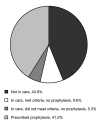Current epidemiology of Pneumocystis pneumonia
- PMID: 15504255
- PMCID: PMC3323247
- DOI: 10.3201/eid1010.030985
Current epidemiology of Pneumocystis pneumonia
Abstract
Pneumocystis pneumonia (PCP) has historically been one of the leading causes of disease among persons with AIDS. The introduction of highly active antiretroviral therapy in industrialized nations has brought about dramatic declines in the incidence of AIDS-associated complications, including PCP. In the adult population, the incidence of PCP has significantly decreased, but it remains among the most common AIDS-defining infections. Similar declines have been documented in the pediatric population. In much of the developing world, PCP remains a significant health problem, although its incidence among adults in sub-Saharan Africa has been debated. This review discusses the epidemiology of PCP during the current era of the AIDS epidemic. Although fewer cases of PCP occur in industrialized countries, increasing drug-resistant HIV infections, possible drug-resistant PCP, and the tremendous number of AIDS cases in developing countries make this disease of continued public health importance.
Figures



References
-
- Kaplan JE, Hanson D, Dworkin MS, Frederick T, Bertolli J, Lindegren ML, et al. Epidemiology of human immunodeficiency virus-associated opportunistic infections in the United States in the era of highly active antiretroviral therapy. Clin Infect Dis. 2000;30(Suppl 1):S5–14. 10.1086/313843 - DOI - PubMed
-
- Hay JW, Osmond DH, Jacobson MA. Projecting the medical costs of AIDS and ARC in the United States. J Acquir Immune Defic Syndr. 1988;1:466–85. - PubMed
